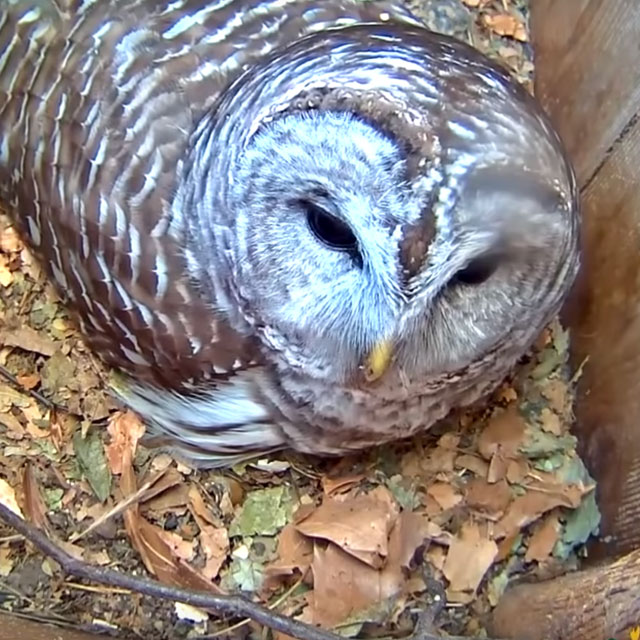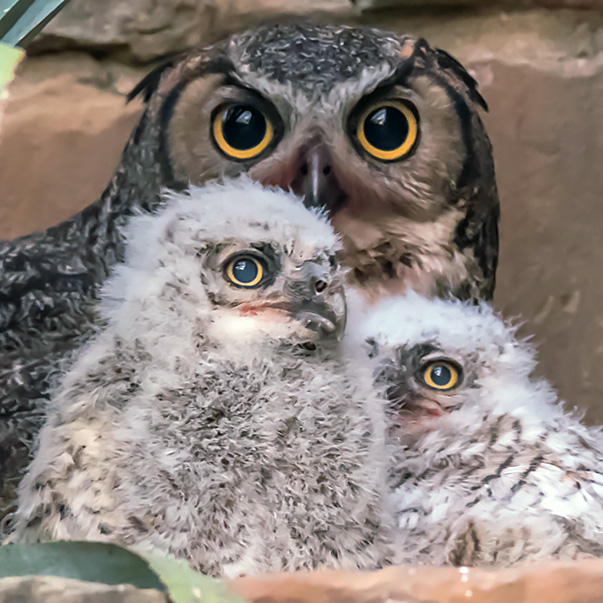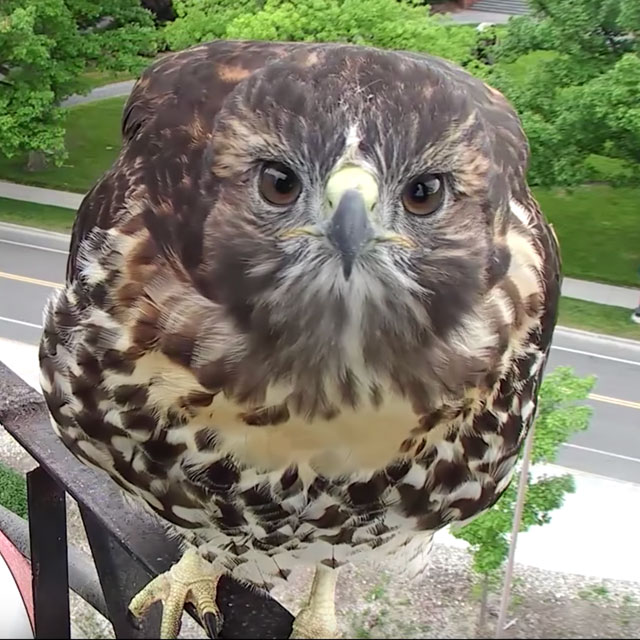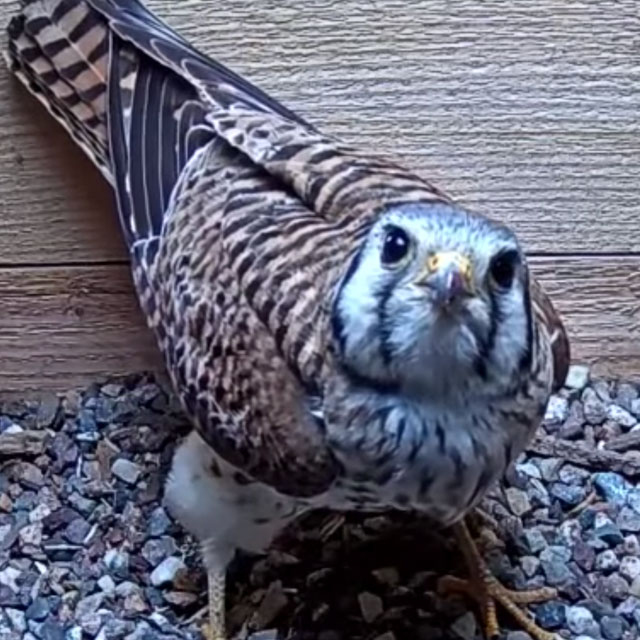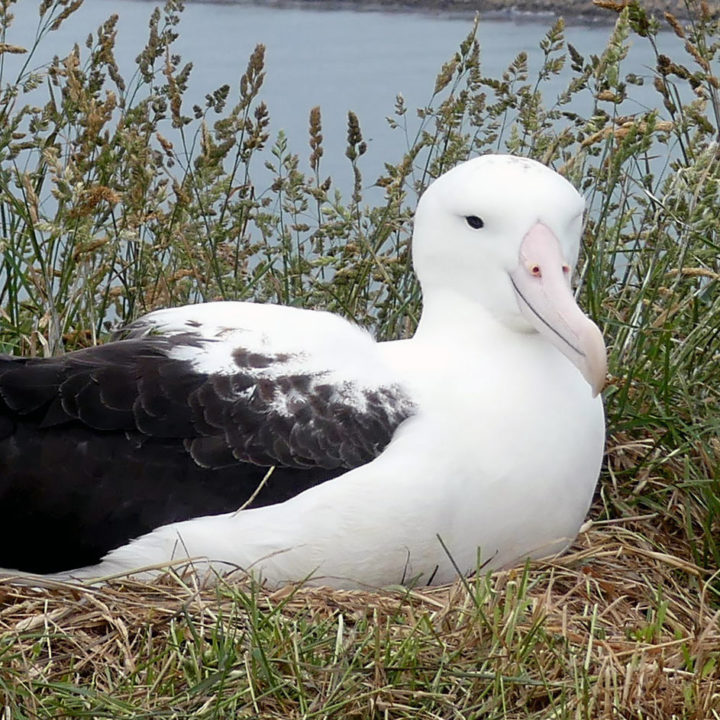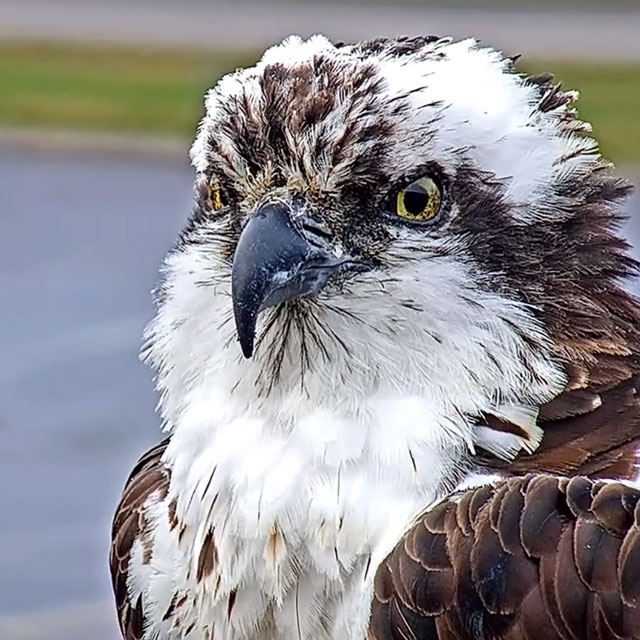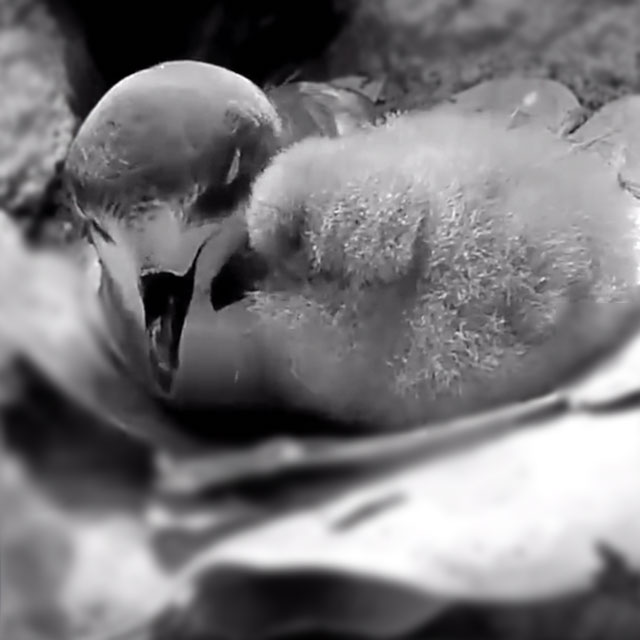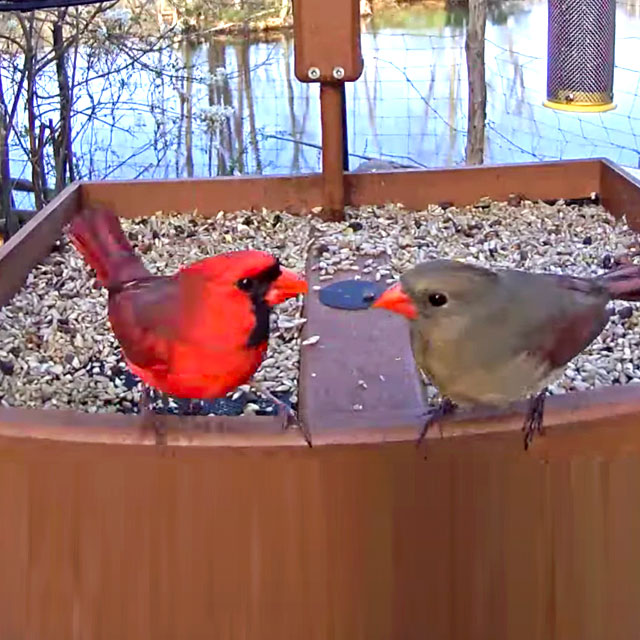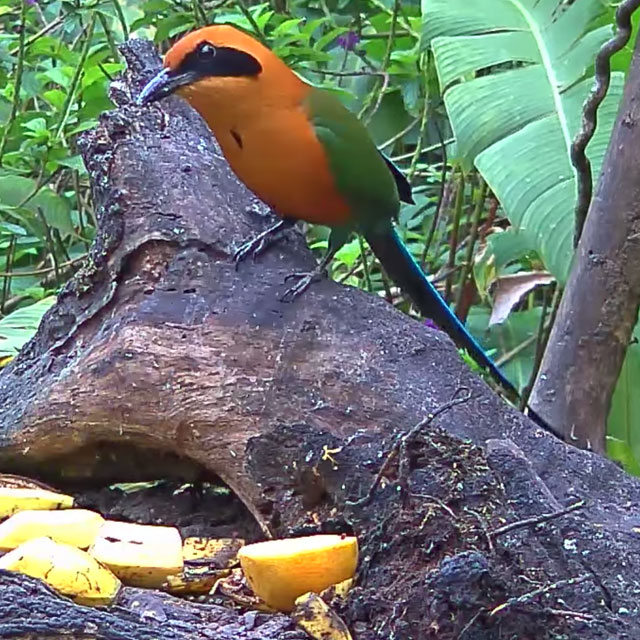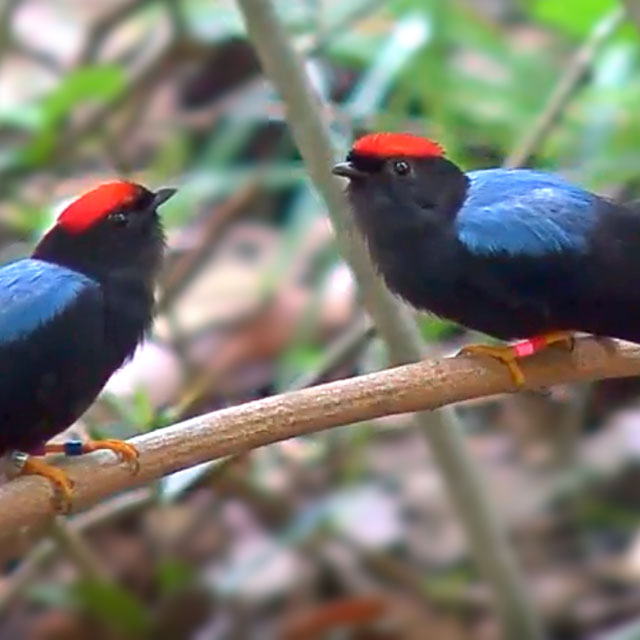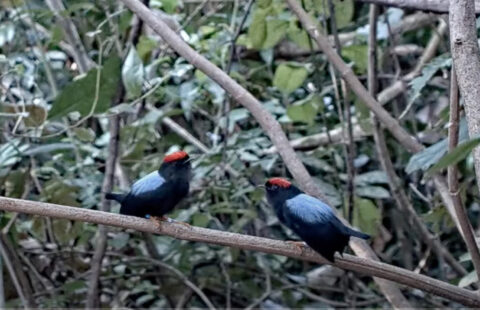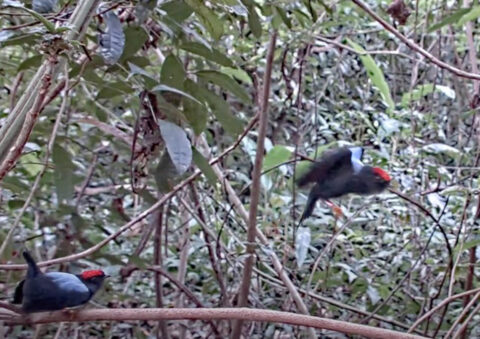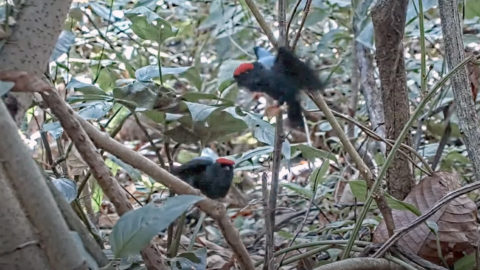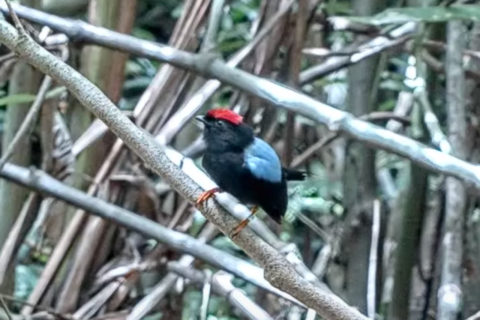Video Highlights
-
Adult Manakin Joined By Two Subadults For Display Practice | April 25, 2024
-
Short Manakin Display Sequence From Two Males | April 18, 2024
-
An Adorable Three-Manakin "Duet" | Lance-tailed Manakin Cam | April 10, 2024
-
Multiple Male Lance-tailed Manakins Assemble For Early Morning Dance Practice – March 28, 2024
News
-
March 15, 2024 Lance-tailed Manakins Leap Into 2024 Cam Season
-
April 3, 2023 Manakin Cam Returns With Wild Displays In 2023
-
March 23, 2022 Lance-Tailed Manakin Cam Leaps Into 2022
-
April 2, 2021 Get To Know the 2021 Lance-tailed Manakin Cam
About The Male Manakins on Cam
The Manakin Cam returns for another action-packed season, featuring some old friends and some new faces! Last year’s beta male, YWmF (banded yellow-over-white on left, metal-over-pink (“fluorescent”) on right) continues to be the alpha at a his perch site.
This year’s twist to the Lance-tailed Manakin Cam puzzle add is that the camera is featuring the same alpha male as last year (YWmF), who had finally started to have some success with females after a few years of struggle to establish a partnership and lots of singing to advertise his perch. Researchers have already seen him mate with one of the females who favored him last year (AAmW), so things are looking up for a successful year ahead. But one of his closest partners from the past (RFFm) has moved out and seems to be someone else’s beta this year. So – it’s not yet clear who YWmF’s display partner will be now, and we will all be watching the cam to find out. For Lance-tailed Manakin males, age and experience are some of the most important determinants in breeding success and last year was YWmF’s first foray into dancing. Watch with us and help us learn more about how alliances have shifted over the coming weeks!
Activity is greatest in the AM, though displays can happen at any time of day. Listen for their three-note duet that seems to say “Que rico!”, which is an advertisement to females that they’re around and ready to perform!
About the DuVal Lab Manakin Research
This project is conducted on a 46 ha area of secondary growth dry tropical forest at the eastern end of Isla Boca Brava, Chiriquí Province, Panamá. The dry tropical forest ecosystem has a long dry season and is predominated by deciduous trees that leaf out dramatically as the rains start in April and May each year. Lance-tailed Manakins thrive in the thick underbrush that grows beneath the canopy and are abundant on the study site. Lance-tailed manakins are listed as a species of “least concern” by the IUCN. As the pace of development accelerates in Panama, clear-cutting of undergrowth is the primary factor affecting where manakins occur.
The Lance-tailed Manakins on Isla Boca Brava have been monitored by Emily DuVal and colleagues since 1999 as part of a long-term study of cooperation and mate choice. Current research on variability in cooperative decisions is funded by a CAREER award from the National Science Foundation (# 1453408). The current project builds on DuVal’s previous work in this population, which was supported by the National Science Foundation; The Florida State University in Tallahassee, FL; The Max Planck Institute for Ornithology in Seewiesen, Germany; the University of California at Berkeley, and the National Geographic Society’s Committee for Research and Exploration. Landowner Frank Koehler has kindly granted field site access for the duration of this long-term work.
Courtship And Breeding
Lance-tailed Manakins, like other species in the genus Chiroxiphia, court females using complex multi-male displays. The webcam shows one display perch in the display area of one pair of males. However, these two males also perform displays on two other perches in their display area, albeit less frequently. The monitored region consists of 29 males and their display partners, with display areas of adjacent alphas usually separated by at least 50 meters. This concentration of male display areas is called a “lek,” and females visit the lek to evaluate lots of males prior to choosing whom to breed with.
Male Lance-tailed Manakins form long-term two-male alliances. Partners perch side-by-side in tall trees to sing duet songs. When a female approaches, they perform a dance of coordinated leaps and butterfly-like flights on the display perch. Displays that happen right before copulation are often performed only by the alpha male, but if both males are present the beta male typically leaves the area several minutes before the final stages of courtship and mating. The most eye-catching display is the “backwards leapfrog” in which the two males leap alternately over one another as the female watches at close range. Bouts of leapfrog display often end with a sharp “eek” by the alpha male, and one display can include many bouts of leaping – and eeking.
Female Choice At The Lek
Female Lance-tailed Manakins move widely among display areas in this lek mating system, typically observing displays by 4-6 pairs of males before choosing their mates. After mating, females nest outside of their mate’s display area and raise their young without any male assistance. Though males apparently contribute only sperm to their offspring, mate choice matters: the offspring of more genetically diverse males are more likely to survive.
About Cams
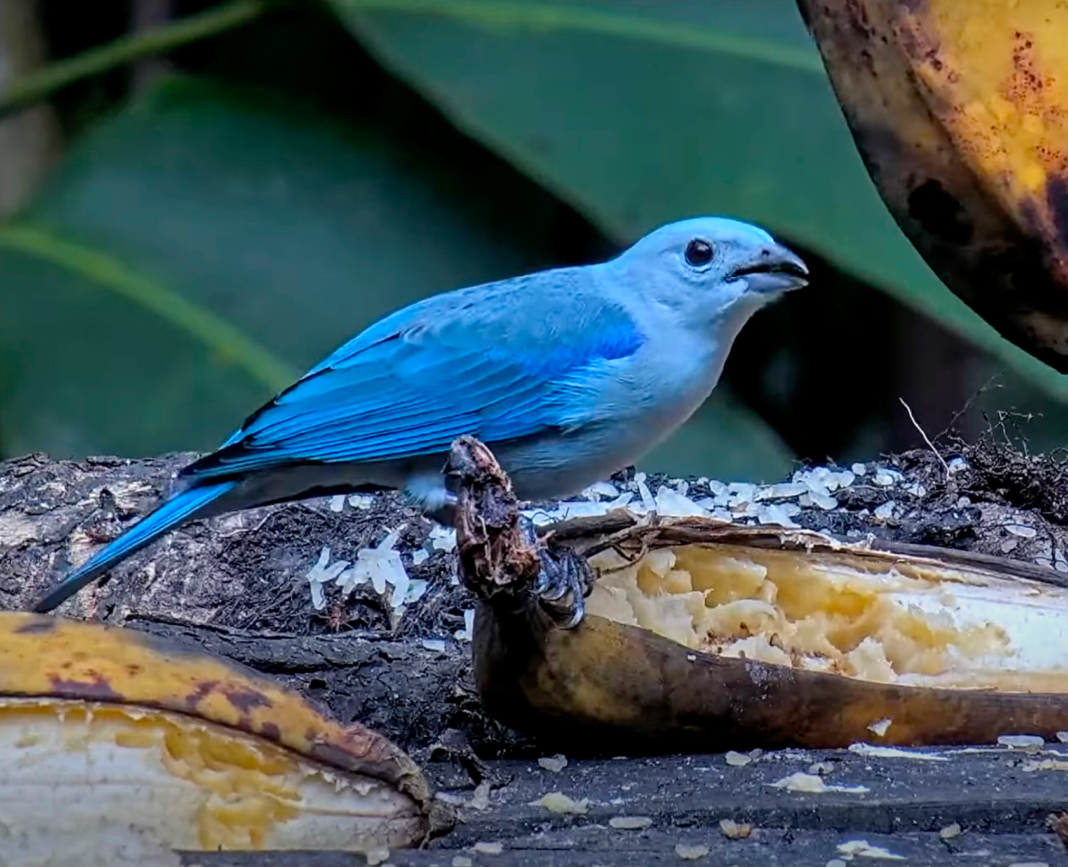
The Cornell Lab Bird Cams connects viewers worldwide to the diverse and intimate world of birds. We work to make watching an active experience, sparking awareness and inspiration that can lead to conservation, education, and engagement with birds.
Our viewers tell us that watching the cams is a life changing experience: an unprecedented learning experience that they liken to virtual field trips or field biology in their living room. We’re excited to continue sharing and learning with the community as we watch the world of birds together.

Bird Cams is a free resource
providing a virtual window into the natural world
of birds and funded by donors like you
Pileated Woodpecker by Lin McGrew / Macaulay Library
